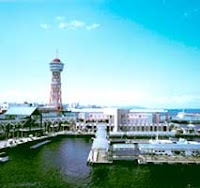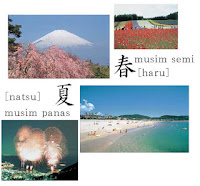Explore Japan - Regional Regions
Japan consists of 47 prefectures. Based on its geographical and historical circumstances, these 47 prefectures can be grouped into nine areas: Hokkaido, Tohoku, Kanto, Chubu, Kinki, Chugoku, Shikoku, Kyushu, and Okinawa.
Each region has its own dialects and customs, as well as unique cultures. For example, the Kanto area that covers Tokyo, and the Kansai region that includes Osaka, is in stark contrast in everything from food flavors to traditional performing arts styles, so people love to compare them.
Japan's population of 127 million people, occupying the 9th place in the world in terms of population in the world. Because the population is quite large compared to the land area, the average population density is quite high at 342 people per 1 km2. This figure is much larger than the United States (29), and France (107), and roughly the same as Belgium (333).
The mountainous areas cover more than 70% of the Japanese mainland, so the major cities are centered on flat land that is not up to 30% of the land area of Japan. Cities with a population of more than a million are: Sapporo in Hokkaido; Sendai in the Tohoku area; Saitama, Tokyo, and Yokohama in the Kanto area; Nagoya in Chubu area; Osaka, Kyoto, and Kobe area of Kinki; Hiroshima in Chugoku area; and Fukuoka in Kyushu. It goes without saying that Tokyo as the capital is the center of Japanese activity. Other major cities serve as political, economic and cultural centers for the region concerned.
Each region has its own dialects and customs, as well as unique cultures. For example, the Kanto area that covers Tokyo, and the Kansai region that includes Osaka, is in stark contrast in everything from food flavors to traditional performing arts styles, so people love to compare them.
Japan's population of 127 million people, occupying the 9th place in the world in terms of population in the world. Because the population is quite large compared to the land area, the average population density is quite high at 342 people per 1 km2. This figure is much larger than the United States (29), and France (107), and roughly the same as Belgium (333).
The mountainous areas cover more than 70% of the Japanese mainland, so the major cities are centered on flat land that is not up to 30% of the land area of Japan. Cities with a population of more than a million are: Sapporo in Hokkaido; Sendai in the Tohoku area; Saitama, Tokyo, and Yokohama in the Kanto area; Nagoya in Chubu area; Osaka, Kyoto, and Kobe area of Kinki; Hiroshima in Chugoku area; and Fukuoka in Kyushu. It goes without saying that Tokyo as the capital is the center of Japanese activity. Other major cities serve as political, economic and cultural centers for the region concerned.



Komentar
Posting Komentar